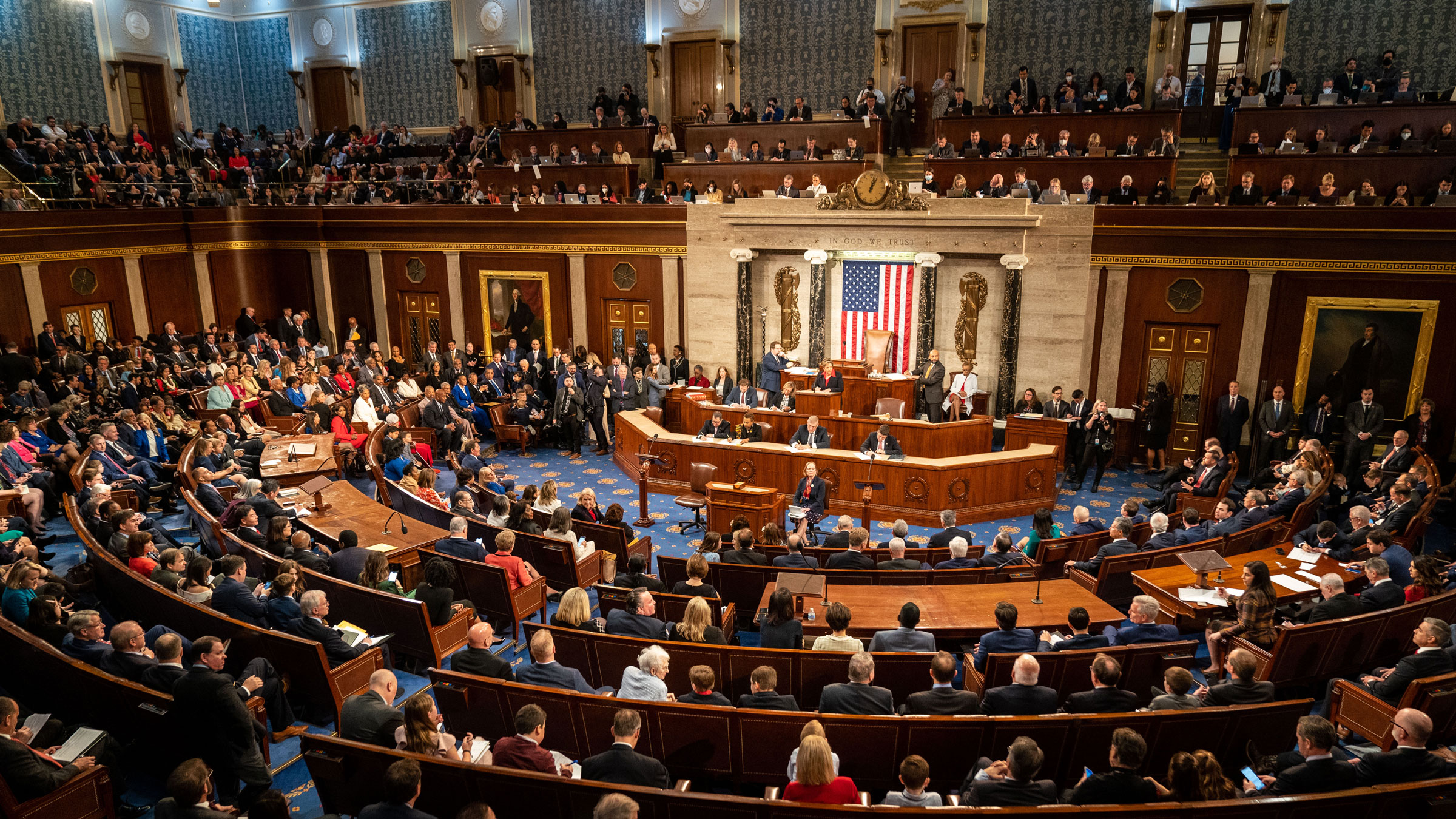
The House is voting now on a new speaker. Democrats placed their party leader Rep. Hakeem Jeffries’ name into nomination, and Republicans placed Kevin McCarthy’s name.
Republican Rep. Andy Biggs is also expected to garner several votes in the first round.
How the vote works: Each member, when their name is called, will state the name of the person they are voting for. It can be one of the names in nomination, their own name, someone else’s name, or present, which is not a vote at all.
The tellers will tally up the votes. The winner must have a majority of those voting for a person. Present votes subtract from that total, thus lowering the threshold for a majority of votes.
If no one amasses a majority of votes cast, it goes to a second ballot, and on and on. If it goes to multiple ballots, other candidates may have their names put in for nomination.
What could happen next: If McCarthy doesn’t get the votes on the first ballot, there is the option to make a motion to adjourn, but it would take 218 votes to do that and Democrats likely not inclined to help Republicans out in any way.
There is no playbook for what the chamber will do if the speaker isn’t elected on the first ballot. The 1923 vote was decided on the ninth ballot, where they kept voting until a speaker was decided. The 1869 speaker vote lasted through 60 ballots over two months.
This Congress may recess the chamber or they could continue voting.
But no other House business can be done until this vote is finished, including swearing in of the rest of the members. Until the speaker’s vote is decided, the clerk of the House is in charge of the chamber.
Note:- (Not all news on the site expresses the point of view of the site, but we transmit this news automatically and translate it through programmatic technology on the site and not from a human editor. The content is auto-generated from a syndicated feed.))



